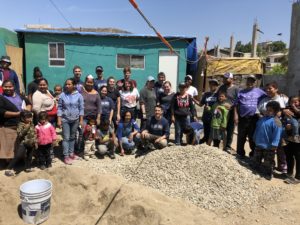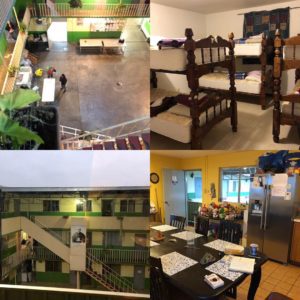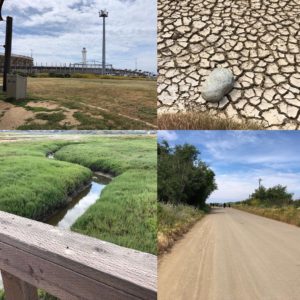De Colores: Bright Colors of Love
This is where I begin. I come from poverty and group homes throughout Los Angeles. There are stories along the 405 N that I will never forget. Stories of smoking cigarettes, dangling my feet out of car windows, surfing the passing wind with my hands. Stories of sitting in the back of big white vans with the scarlet county seal on the side, a seatbelt that doesn’t buckle, riding to Edelman’s Children’s Court. Stories of sometimes sitting beside a social worker going from one home to the next. I had so many fantasies of one day getting in the driver seats of one of those cars.
***
September 2018 I was reporting on children who’d died while in the care of their biological parents despite, multiple previous visits from Department of Children and Family Services (DCFS) — the children’s cases were never escalated, but were rather put on a voluntary track, a track with the aim of keeping families together. We call it, voluntary family maintenance.
Which, in some cases makes sense; as a woman who entered foster care as a young girl herself, I know all too well, that there were many children taken out of loving homes, not for lack of care but for lack of resources. Yet like all of our other public social services, the supports were delivered piecemeal — a parenting class here, a bus pass there, a housing voucher for some.
At this time, I was teaching at LMU — one day I looked at my students, a sea of blank faces, what a terrifying moment. How did I get here? I’d thought. What am I doing? I had them follow me, we walked to the Cave, we met other students who were assembling sack lunches outside the parish, we got in the van and delivered meals outside of the people concern’s drop-in center. On the way back from delivering the lunches the people in my van debriefed. One guy, a young man who sat next to me, he wore Oakleys around his neck, he said he wanted to be a Navy Seal, he had a crew cut, he appeared to be the opposite of me. He began by sharing, “When we first got there I saw this woman, a woman I saw last time, and I knew she was going to ask me for extras, and I prayed please … give me some patience … and she did ask for more chips, and she was picky, and she was asking to trade her apple for a brighter better apple, and then she apologized to me, she said she was having a rough day. And I realized I got just what I asked for. Patience. Just enough. But I don’t come here for that. I come here to be loving.”
Prior to teaching at LMU I wasn’t sure what it meant to teach at a Jesuit institution. This was the beginning of my education. Here is when I met John Paul Ramirez, he invited me to be the staff chaperone on a De Colores trip to Tijuana. That is 12 of our students WITHOUT THEIR CELLPHONES. For two days.


I’d like to keep some of the mystery alive around what happens at De Colores. I’ve been twice now and each time is its own unique magic. But I will say this, there is a day on the trip when you meet Chris and Julianne North. As college students at LMU they’d participated in their own DeColores experience. At the time, their work was to paint an orphanage. What they found was that the kids they were serving, were not orphans at all. They had parents who simply lacked the resources to keep them together. So they set out to keep those families together. This was the beginning of Build A Miracle. If families own land, Build A Miracle helps them realize their dream of a home as long as they enroll their kids in school, and volunteer for others in the community to own a home as well. They’ve built over 320 homes to date, built three community centers — where over 250 students attend class each week and awarded 26 college scholarships.
This doesn’t even begin to capture all of the other gifts they give with furniture and technical courses. Sweaty and heart full, we enter the community center, eat lunch, meet the teachers, enjoy folklorico dancing, talk to other visitors, play basketball, sing. I look at the room, how expansive it is, how alive and welcoming, and safe, and loved it is and I ache with the knowledge of the possible.
Because there on the other side of this trip, on the other side of that wall with its patina wire, a wall where men and women come every Sunday to touch fingers or learn English with those of us on el otro lado, the wall with a jeep of immigration officers policing the entrance, Friendship Park … that’s the name of the park on el otro lado. And beyond Friendship Park, was maybe a kind of freedom, a freeway, that same freeway I’d coast my palms up and down on the wind on the way to all my in-between places, and even further there was downtown Los Angeles, and a courthouse, where I sat week after week on a murder trial reporting on another child fatality. Here, here is where I need the patience, but then again I’m reminded of what that guy said in the van: That is not why I come here. I come here to be loving.

It’s only been through students like those who accompanied me on the De Colores trip, who exhibit a curiosity, self-awareness, a sense of empathy, and an esteemable way of being in the world that I have been able to fully understand how closely the philosophy of how to be with others is critical in a journalistic practice.
Co-published in LMU’s Weekly. The faculty are not compensated for going on these trips, this fellowship with Community Change has made it possible for this trip to occur, twelve students and two staff laid concrete and painted two homes for two different families so they can move in and send their children to school.